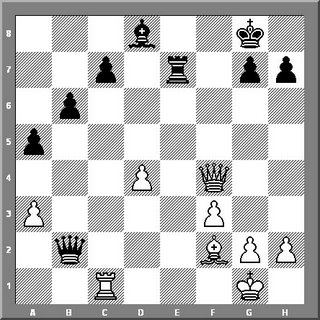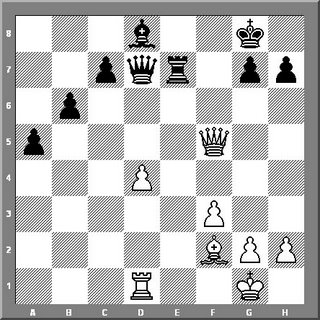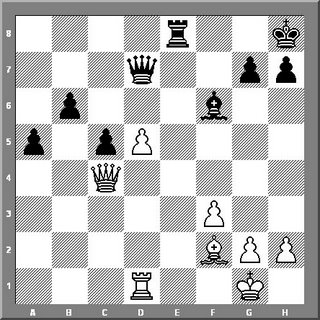The 3rd Dato’ Arthur Tan Malaysia Open is the only tournament in Malaysia which has a lot of masters and strong players playing in it. However, it’s quite poor for Malaysian chess fans because only 7 local heroes take part in the tournament. In my opinion, the limited participant from local chess players caused by the expensive entrance fee. During the tournament, the news coverage was so poor made the local chess players become more disappointed with it.
Here I would like to refresh the local chess player memories in 3rd Dato’ Arthur Tan Malaysia Open 2006. I focus on endgame of local chess players only. I start our discussion on IM Jimmy Liew game. Round 3, Sumant Subramaniam against IM Jimmy Liew.
[Event "Dato Arthur Tan 3rd Malaysian Chess Ope"]
[Site "Kuala Lumpur"]
[Date "2006.08.22"]
[Round "3"]
[White "Sumant Subramaniam"]
[Black "IM Jimmy Liew"]
[Result "0-1"]
[WhiteElo "2013"]
[BlackElo "2320"]
[PlyCount "96"]
[EventDate "2006.08.21"]
1. e4 e6 2. d4 d5 3. exd5 exd5 4. c4 Nf6 5. Nc3 Be7 6. Bd3 Nc6 7. cxd5 Nxd5 8. Nge2 Bg4 9. O-O O-O 10. Be4 Nf6 11. Bb1 Qd7 12. f3 Bf5 13. Be3 Rad8 14. Bf2 Rfe8 15. a3 Bxb1 16. Rxb1 Qf5 17. b4 b6 18. Rc1 a5 19. b5 Ne5 20. Ng3 Qg6 21. Nce4 Nxe4 22. Nxe4 f5 23. Ng3 Rd7 24. Re1 Nf7 25. Rc6 Nd6 26. Qc2 Bd8 27. Re5 Qf7 28. Nxf5 Nxf5 29. Qxf5 Rxe5 30. Qxe5 Re7 31. Qg3 Qf5 32. Rc1 Qxb5 33. Qf4 Qb2 (diagram)

Let us assess the position starting from here. White to move. White: Passive bishop, 2 isolated pawn (a3 and d4). The queen tied down to defense rook at c1 square. Black: No weaknesses in pawn structure, passive bishop at d8 and active queen and rook (attacking).
Here, black has more advantage, ready for attack and white need to defense. Now it’s white turn to move. So, white can choose to:
(1) activate bishop at f2: 34. Bh4 Rf7 35. Qe3 Bxh4 or
(2) open a hole for king to avoid back rank mate : 34. h3 Re2 35. Rf1 Qxa3 or
(3) remove a3 pawn from attack and stop black’s queen side pawns in the future : 34. a4 Re2 35. Re1 Rxe1+ 36. Bxe1 and now white is safe, or 34 … Rf7 35. Qe3 Re7 (35 … Bf6? the bishop has no place to go) 36. Qc3 and the game equal.
34. Rf1 (a move which losing a pawn for nothing). 34. … Qxa3
Now black has an extra pawn and connected pawns. Very strong.
35. Qf5 (Better 35. d5 a4 36. Qc4 or 35 … Qd3 36. Qa4 ready for 37. Rd1) Qd6 36. Rd1 Qd7 (diagram)

(Basic concept in endgame, exchange heavy pieces. White cannot stop black’s connected pawn on queen side. If 37. Qxd7 Rxd7 38. Kf1 c5 and black will win easily).
37. Qc2 Re8 38. Bg3 Bf6 39. Qc4+ Kh8 40. d5 c5 41. Bf2 (diagram)

Nice try from white but not the best. The best defense is 41. Rb1 Rd8 42. d6 . White can slow down his defeating process but hardly safe his game. The effect of outside passed pawn (connected pawns) plays important role here.
41 … h6 42. Rb1 Rd8 43. Rxb6 Qxd5 44. Qf1 Bd4 45. Rb5 a4 46. Ra5 Bxf2+ 47. Qxf2 Qd1+ 48. Qf1 Qc2 0-1 (diagram)
A good endgame lesson from IM Jimmy Liew for our young talented player.

1 comment:
Nice blog u have here. May I know how did u get the chess pictures where you can arrange the pieces according to your game?
Post a Comment